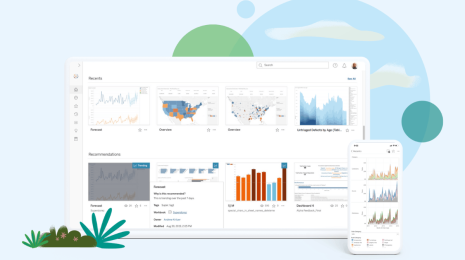These companies used Tableau + Snowflake for flexibility and scale, a winning combination
Earlier this summer, we caught up with a few of our customers at Snowflake Summit, Snowflake’s inaugural customer conference. At the Summit, we learned how they’re combining the scalability and flexibility of Snowflake’s cloud data warehouse with the powerful visual analytics capabilities of Tableau. From a fitness app that serves over 41 million athletes to an insurance company that analyzes massive amounts of data processing claims, sales, and policies for 1.4 million customers, we discovered common patterns that helped us understand why customers in many different industries love the Snowflake + Tableau combination.
nib group: Scaling out for concurrency and up for Tableau
Luke Stapleton, the analytical platform manager at nib group, did not want to undertake a big DevOps project when planning the insurance company’s cloud analytics journey. The team chose Snowflake as its cloud data warehouse because it proved to have everything the company needed out-of-the-box. It easily complimented the company’s existing cloud infrastructure, quickly processed its significantly large volumes of data, and flexibly scaled up and out depending on the needs of the business.
Another important factor when choosing Snowflake was the ability to support nib group’s Tableau deployment, which had significantly expanded across the organization through organic growth to become the group-wide data visualization platform of choice. By live querying Snowflake, the team could quickly calculate KPIs in Tableau for metrics across claims, sales, policies and customer behavior. Per Luke, “If we didn’t have Tableau and Snowflake, it would be very difficult to manage the data volumes that we have. Tableau works very well live querying Snowflake to support concurrent Tableau usage.”
Strava: Empowering leaders with insights, without needing to run SQL
Strava is a fitness tracking application that has a global community of 41 million athletes. The company wanted to get data into the hands of their business leaders so they can make the right decisions. “Tableau and Snowflake had a tremendous impact on our organization; it really allowed us to leverage our data and really put data into the fingertips of non-analysts and business leaders so they can have actual insights from their data without having to run SQL,” said Cathy Tanimura, Sr. Director of Analytics and Data Science at Strava.
Strava uses Fivetran to centralize its data, Snowflake to warehouse it, and Tableau to analyze it through an extensive amount of dashboards. One of these dashboards helps the team track product metrics so they can see product usage data in real time. With its modern data stack, Strava can quickly and efficiently prioritize product features and test channels. Strava also built out an attribution model to better understand user acquisition and map the entire customer journey, which they can bring into Tableau for deeper analysis.
Common patterns in the journey to cloud analytics modernization
Regardless of the type of industry or level of maturity along the path to cloud analytics modernization, there are common benefits that emerge from organizations that use the combined power of Snowflake and Tableau:
- Accelerated time-to-value: The days of customizing legacy data warehouses are quickly coming to an end, as customers want to get up-and-running quickly when loading, warehousing, and analyzing their data, without devoting resources to set up and manage bulky infrastructure.
- Built for the cloud: Whether looking to go all-in on the cloud, or slowly transitioning to a cloud data strategy, organizations are pursuing analytics technologies that simply work—in the cloud or in hybrid environments—as attempting to retrofit an on-premises solution for the cloud won’t provide the flexibility and scale necessary for future growth.
- Faster data processing: Enabling a data-driven culture requires that data processing times be significantly reduced, even as data volumes grow exponentially.
- The ability to support concurrent usage as you scale: As data skills accelerate and adoption of analytics grows, live querying data to support concurrent analytics usage is a must. Each virtual data warehouse is completely independent of one another, so you can store an infinite amount of data, while scaling to meet the business requirements.
- Getting data into the hands of the business: Business leaders and non-analysts alike need to gain insights from data without learning to run SQL. Snowflake can easily handle structured and semi-structured data simultaneously, which allows Tableau to query both at the same time via the native Snowflake connector.
Get started today with the Accelerated Analytics Quick Start
If you are new to using Tableau and Snowflake together, you can get up and running in just minutes. The Accelerated Analytics Quick Start with Tableau and Snowflake on AWS provides a standalone instance of Tableau Server, while establishing a connection to a new Snowflake account. Skip the manual setup and configuration to begin analyzing your data at lightning-fast speeds.
For those already using Tableau and Snowflake together, our technology experts are happy to help you see and understand your Snowflake account usage, directly in Tableau! We have a number of pre-built dashboards that provide clarity around your compute cost, monitoring performance, and user adoption. Access these dashboard templates as apart of the Quick Start, or download them here along with instructions on how to set up your Snowflake account usage dashboards.
Relaterade berättelser
Subscribe to our blog
Få de senaste Tableau-uppdateringarna i din inbox.








